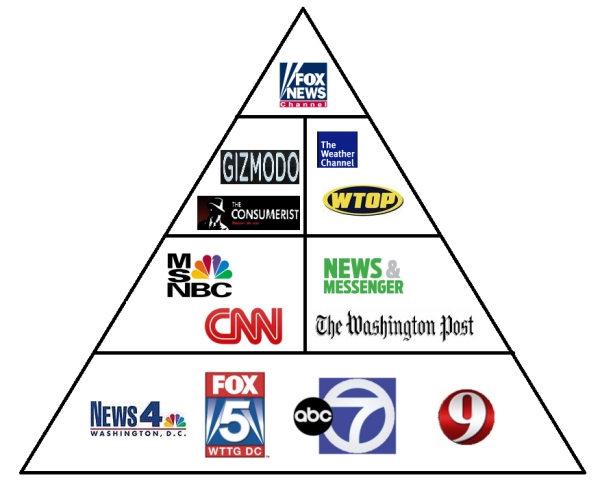February 12th, 2010 — Uncategorized Tagged Briggs
Chapter 2 of Mark Briggs’ “Journalism Next” textbook focused on advanced blogging techniques.
Briggs claimed that a blog has three defining characteristics: a reverse-chronological story update order, posts with a headline and a body, and a space reserved for reader comments. Blogging was also explained in a way that it fits the roots of immediacy and reader interaction in journalism. Continue reading →
February 12th, 2010 — Uncategorized Tagged Briggs
Chapter 1 of Mark Briggs’ “Journalism Next” textbook focuses on the fundamentals of computers and the internet that is required to be a successful journalist.
Briggs made it clear that the internet and the World Wide Web are two different things. He claims that the internet is the network of unified computers worldwide, while the World Wide Web is used to access information. Continue reading →
February 4th, 2010 — Uncategorized Tagged C-SPAN
Chris Cillizza, a political reporter for The Washington Post, spoke about politics and his experience in journalism to college students on January 21, 2010 on C-SPAN 3.
Cillizza focused on Republican Massachusetts Senator-elect Scott Brown’s recent victory against Democratic candidate Martha Coakley. He criticized Coakley’s campaign ads, saying that she relied on her experience more than focusing on what she would do for her state as senator. Cillizza also mentioned that Coakley resorted to attack ads too late into the campaign for the ads to be effective. Continue reading →
January 26th, 2010 — Uncategorized Tagged COMM 361, Homework, Media Pyramid
Below is my media pyramid:

Since I watch the local news the most, it is at the bottom of my pyramid. I watch MSNBC/CNN and read the ‘News & Messenger’ (Prince William County newspaper) and ‘The Washington Post’ frequently, but mostly online vs. the actual newspaper. About every few days I check blogs like Gizmodo and Consumerist, as well as listen to WTOP or watch The Weather Channel. I watch FOX News sporadically, mainly to compare it’s coverage of the news to other stations.
